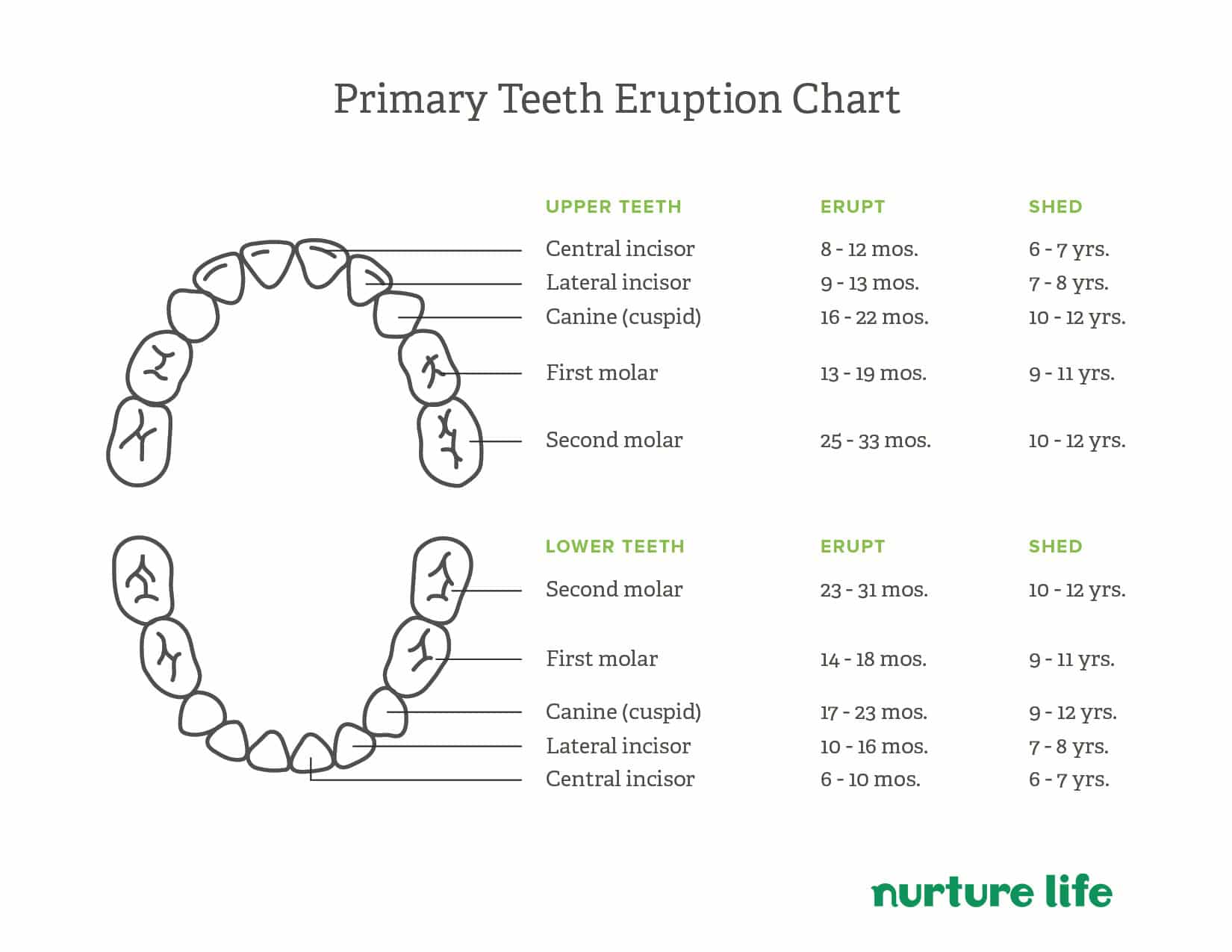Baby Teething: What to Expect
Baby Teething: What Baby Teeth Come In First?
When your child begins their baby teething, what can you expect? For starters, know that on average, teeth erupt between 6–7 months of age. A good rule of thumb is the rule of 4’s: You can expect about four teeth every four months starting around seven months of age. There are 20 baby teeth total, and they’re usually all present by two-and-a-half years of age.

Some babies start teething as early as three months or as late as 15 months. This is considered normal and can be attributed to genetics.
When your baby begins to eat real food, challenges may arise, especially if they’re teething. Many times, parents confuse baby teething pain with a disinterest in food. Your baby is also forming new skills with self-feeding, which can be frustrating for them. This is a great time to introduce teethers. Some babies are comforted by the texture and cold feel of teethers.
When feeding your baby, take your time in determining if your baby will more readily accept purees or soups. Also, try offering healthy popsicles or frozen foods in a silicone or mesh feeder, like the Boon PULP Silicone Teething Feeder or the Munchkin Deluxe Fresh Food Feeder. Cubed mango, seedless watermelon or mixed vegetables are all good choices, and the cool temperature will soothe their gums and teeth.
Signs and Symptoms of Baby Teething
Different babies exhibit different signs of baby teething. You might see a low-grade fever (less than 101°F), excessive drooling and an increased interest in putting objects or fingers in their mouth. Since drooling can cause rashes on the face, neck or upper chest area, try having your baby wear a cloth bib as they’re teething. Pat their cheeks and chin dry, then apply a thin layer of healing ointment (such as Aquaphor), to help soothe the rash and prevent further irritation. Excessive drool can also cause loose stools. Use diaper cream to protect your baby’s bottom from diaper rash and irritation.
According to the American Academy of Pediatrics, if you have an infant younger than four months old with a rectal temperature of 100.4°F or above, you should immediately call your pediatrician or go to an emergency room. This could be a sign of a potentially life-threatening infection.
When Should I See a Pediatrician or Dentist?
The American Academy of Pediatric Dentistry recommends that your child’s first dental visit occurs when their first tooth erupts or age one, whichever comes first. The purpose of the first visit is to give you an opportunity to establish a relationship with your child’s dentist in case there’s ever an emergency. This visit also allows the dentist to review healthy eating guidelines and home-care recommendations, discuss oral habits, and evaluate growth and development of your child. It’s a great time to ask questions related to baby teething and find out what to expect in the coming months.
For more information about Dr. Reena’s work at Growing Smiles, please visit the Growing Smiles website.

